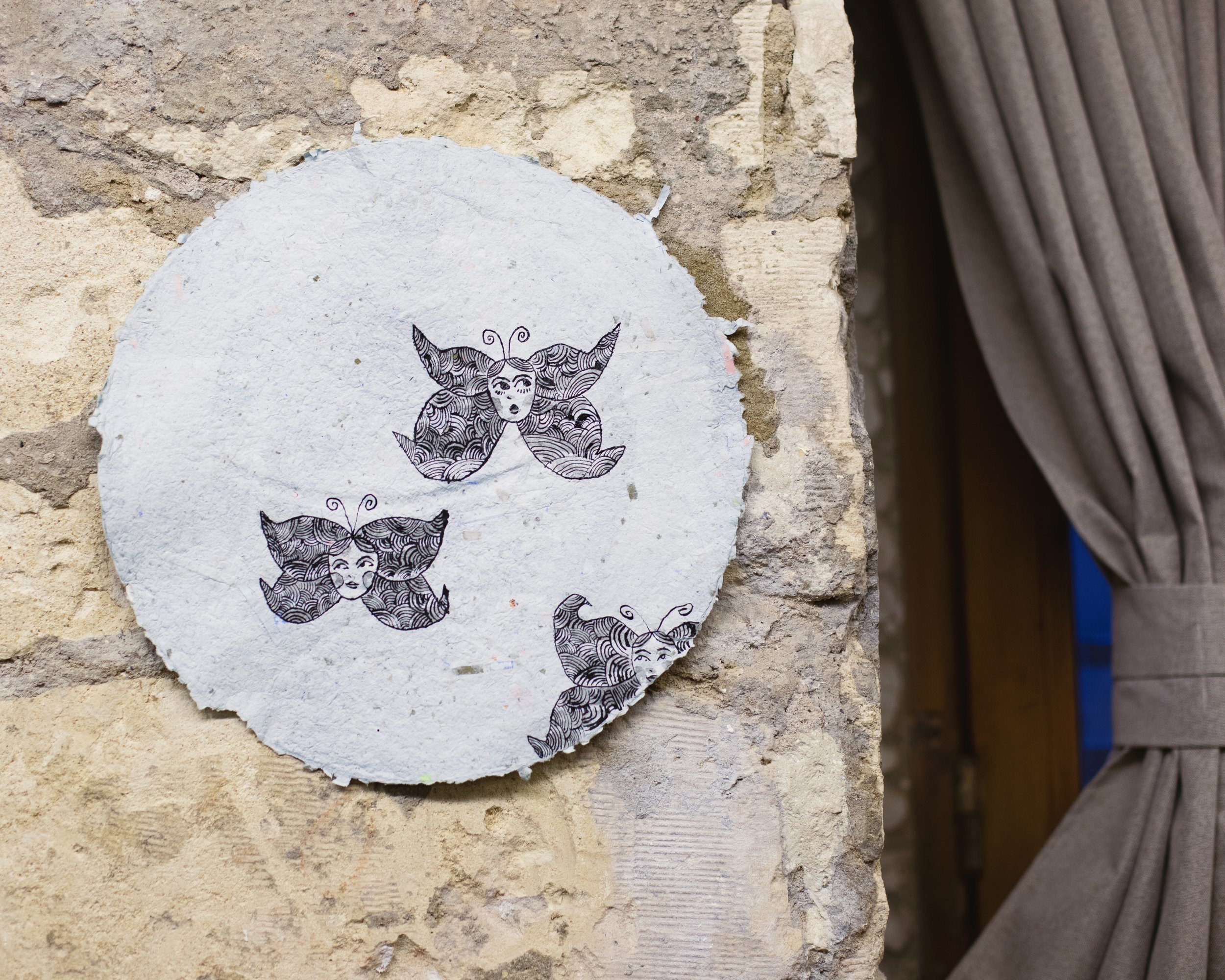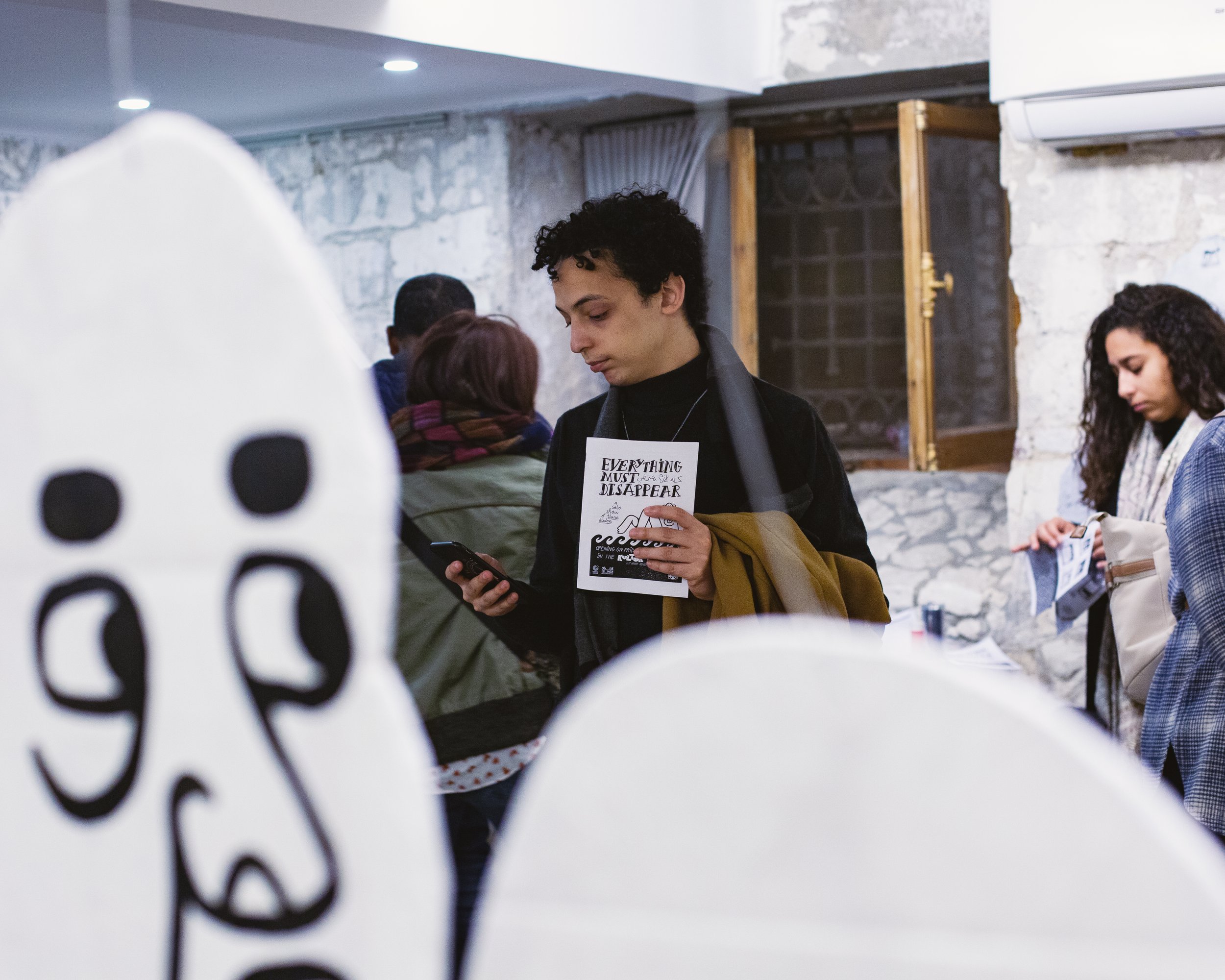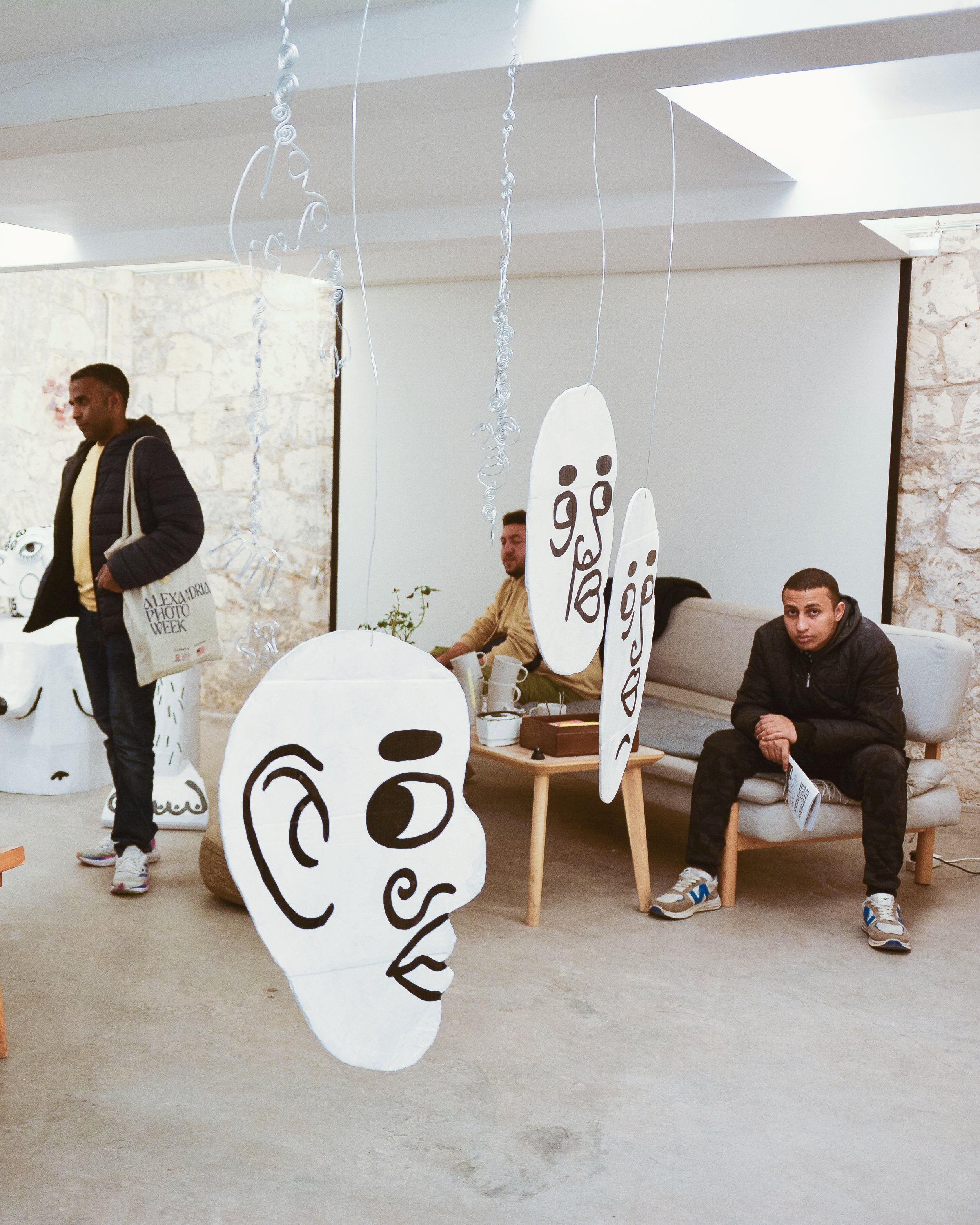everything must disappear
Everything Must Disappear is a personal exhibition developed over 6 weeks during a residency with the Goethe Institut in Alexandria. It is a multidisciplinary project that questions the female body, grief, and the ultimate necessity of decluttering. It will be presented to the public at the Kulturgarage in Alexandria, from February 21st to 24th, 2025.
welcome to the house of the fat lady
feel free to read, drink, eat, talk and relax
and keep in mind, there are only two rules :
you must be very polite to the fat lady
you don’t want her to cry
also
everything must disappear
please take home whatever you enjoy
cherish and care for them
if not for you do it for her
and go thank her on your way out
Accumulate, build, let go
Everything Must Disappear is a multidisciplinary solo exhibition, developed during a residency at the Goethe-Institut in Alexandria. Isolated-or rather sheltered-for 6 weeks, I developed this project like an insect weaving its cocoon: I imagined it as a space of experimentation in which I invented, fabricated, collected and accumulated all kinds of objects, techniques, practices and thoughts. This project is part of an ongoing reflection that has been permeating my work for years: the tension between memory and oblivion, the importance of the archive (and the absurd in archival practices), the transformation of the body and its dialogue with the territory, and the place of our political commitments in our artistic and living practices. Everything Must Disappear is a unique project, multi-faceted and protean, performative and participative, which extends these questions by opening them up to new forms and new media.
Movement, experimentation, improvisation
In my artistic practice, the creative process is as significant-if not more so-than the “final” work (the one on display). I make art for the moment, because it makes me feel good, as a cathartic and entertaining act, but whatever happens I make art for the here and now, not for a solemn posterity. I like to embrace chaos and leave space for risk, attempt and experimentation - I don’t really care about making pretty things. I entered this residency period with a relatively vague idea of the end result, letting daily discoveries guide the evolution of the project. For me, this approach to residency is the most interesting, as it allows me to evolve momentarily in the mess of total freedom, working on everything at once within a limited timeframe. In that way, I’ve learned to embrace spontaneity and play with the boundary between control and disorder, absurdity and solemnity, frenzy and apathy, ingenuity and ease.
Objects in sharing, languages in movement, dialogue in action
Made almost entirely from recycled materials - moving boxes, egg cartons, waste paper - this project embraces impermanence right down to its very substance.
In a very pragmatic way, it suited me well to get rid of everything that was lying around my apartment, and especially to transform it into something a bit more fun, and then get rid of it for good, as if my duty had finally been fulfilled. As an artist, I think that’s part of our responsibility: to transform and give back to the world what belongs to it. And so much the better if we can bring a little humor or tenderness into the process.
In my practice, it’s important to avoid at all costs the sacralizing relationship between art and the public, and instead to make objects that can be manipulated, owned, appropriated or played with. I prefer to imagine the art object as an interface between the living world and the world of ideas - and to deprive it of the idea that everything must have a value. I believe that truth lies in the little things that make the heart feel good, and I don’t pretend to make art for any other reason. Between drawings, paintings, artefacts, talismans, mobiles, prints, words and gestures, the exhibition is fundamentally multidisciplinary: each technique brings its own texture, its own temporality, and is collectively inscribed in this narrative of transformation.
More specifically, I’m newly exploring the relationship between word and image, both in the work itself and in the creative process. I’m constantly going back and forth between drawing and writing, and this shift, relatively recent in my practice, is reflected in the growing importance of writing, which is gradually becoming a strong new pillar of what I produce. For this project, I wanted to write new things and play between academic and curatorial writing and other genres more rooted in the literary tradition, such as poetry or novels. I write stories about my images and draw what the stories tell, I write poems about art and novels about myself. It’s also important for me to make my processes (thinking, writing, making) as transparent as possible, to reconnect gesture and result, and to share thoughts in motion. That’s why I also write a lot about what I’m making, in words that are neither too serious nor too heavy, so that the more curious can grasp the project with sufficient keys to understand my crazy ideas, if they wish to do so. I want to incorporate a form of familiarity into my practice: a commonplace, a shared visual vocabulary, something comfortable and accessible. I make art because it makes me feel good and because it’s fun, because nothing is more important. The art world is opaque, incomprehensible and above all inaccessible enough, and sharing this more theoretical, curatorial writing is something I’m keen to include in what I show the world. If I wanted to talk about the world in a solemn way, I would have done politics and not little drawings.
Finally, experimenting with literature adds new reading grids, new layers of meaning - developing images and words together, making them dialogue and resonate with each other at the same time.
Home, body, memory: a territory in mutation
I’d been looking for a long time for a way to combine my political commitments, or more generally my feminist thinking, with my artistic practices. The body was the starting point for this project. The body, my body, women’s bodies, the body imagined, ideal or fabricated - whether in space, on the street, in the world or within itself. The body is considered in all its paradoxes: as a place of care, violence and transformation, the body as a place, as a home and the symbolic relationship between body and home: between domesticity, belonging, transformation, maternity - a body-home or a homebody, a space of memory, intimate histories, rituals and attachments, protective and vulnerable, nest and cage.
I’m obviously inspired and nourished by the great feminine and feminist figures of modern art: from Louise Bourgeois’s Femmes-Maisons to Issy Wood’s Sphinx- Mother, via Niki de Saint Phalle’s Nanas and Frida Kahlo’s notebooks - I continue to reflect on femininity as a territory of tension, in the service of developing a project that is a little more embodied, always personal, a project in the flesh, the fruit of a working process that mobilizes the whole body a little more, which has enabled me to move beyond tiny scraps of paper to open up my practice to new dimensions.
I would like to quote Maira Kalman, a visual artist, illustrator and writer, among many other things, because I will never get tired of listening to her talk about art and the world, and I couldn’t have found better words than hers:
« [...] it made me think about the things that the women hold, literally and metaphorically: balloons and grudges and heavy loads and cabbages and stupendous love and courage and the pink ukulele under a cherry tree.
[...]
What do women hold ?
The home and the family and the children and the food, the friendships, the work, the work of the world and the work of being human, the memories and the troubles and the sorrows and the triumphs and the love. Men do as well but not quite in the same way.
Sometimes when I’m feeling particularly happy or content, I think I can provide sustenance for legions of human beings, I can hold the entire world in my arms. Other times, I can barely cross the room, and I drop my arms, frozen.
There is never an end to holding, and certainly there is often the feeling of never doing enough. And then there is the next day, and the next day, and one holds on. »
The obsession of collecting, the necessity of letting go
In my head, my thoughts have always been extremely disordered, tangled up with each other - and this is reflected in my practices. Instead of thinking for 6 months about the methodical, justified and detailed construction of a great masterpiece, I prefer to work in a state of urgency and agitation - producing a lot in order to tidy up or empty my mind. Collecting as a practice goes beyond the production of the artistic object itself: it’s more a question of establishing a framework, a system, into which a multitude of small things are gradually injected. What’s important is always the contributions as a whole, the process and this system, which, as the work progresses, becomes more fluid, more flexible, adaptable to unforeseen events and last-minute ideas, growing and consolidating. It’s a narrative, a story, a sequence, in what it presents but also in its very essence. It’s something that moves. I don’t care how beautiful the results are. This project explores a paradox: between the archive fever and the collector’s impulse - sometimes bordering on Diogenes syndrome - and the desire for an art rooted in the moment, how can we maintain our attachment to what comforts us while knowing that it will all disappear? Each work, in its singularity, is both an attempt to capture a moment and an invitation to let it go. The themes of detachment, decluttering and mourning are the thread that binds all the pieces in this exhibition together, without really saying what it’s about. I’ve always collected - objects, images, fragments of thought, practices - as if to conjure oblivion, as if memory could be frozen in matter and inscribed in the things of the world. This accumulation is both a refuge and a burden that impedes transformation. The exhibition embodies this tension between the desire to preserve and the need to free oneself, between attachment to the traces of the past and the constant need for symbolic rebirth.
Pushing this logic to its limits, Everything Must Disappear offers visitors the chance to take a part of the exhibition with them - objects, drawings, scattered fragments - thus extending the idea that nothing really belongs to us, and that everything is destined to circulate, dissolve and be reborn elsewhere. The exhibition is thus conceived as a collective performative experience, a space where spectators become part of the process, invited to meet, to gather, and above all to unburden themselves as much as to appropriate. On its own scale, between the processes of creation, display and de-cluttering, this project is a kind of factitious replica of mourning: first we make, then we lose.
The act of unburdening oneself becomes a gesture of resistance, a refusal of fixation, an acceptance of impermanence and a celebration of the ceaseless cycle of loss and reinvention. For me, art in its purest form is an act of shared vulnerability, a dialogue where the intimate and the universal meet, a moment of sharing that shows we are here and now.
The Fat Lady
At the center of the exhibition stands a papier-mâché sculpture, a sculptural self-portrait, the physical and symbolic heart of the work and the embodiment of all these questions linked to the body and the home, inviting the viewer to question their own body, its memory and its metamorphoses.
It’s a fat lady you can slip into, a fat lady who invites you into her home, into herself. The exhibition space becomes both her home and her body, a body turned inside out, whose entrails, memories, dreams and fears, mourning and secrets, are all visible. More than a simple reflection of myself, this self-portrait becomes a symbol of the perpetual process of transformation in the face of impermanence, and redefines the contours of this unconventional exhibition, where the stage space is reversed: the spectator becomes a stakeholder, the viewed becomes the viewer, as in a kind of upside-down theater, a house, where we are invited to have tea with the fat lady, and rid her of all the clutter. And, in the end, the fat lady is all that’s left, originally surrounded by all her things, and the audience gradually dispossesses her of everything that weighed on her heart.
See the process
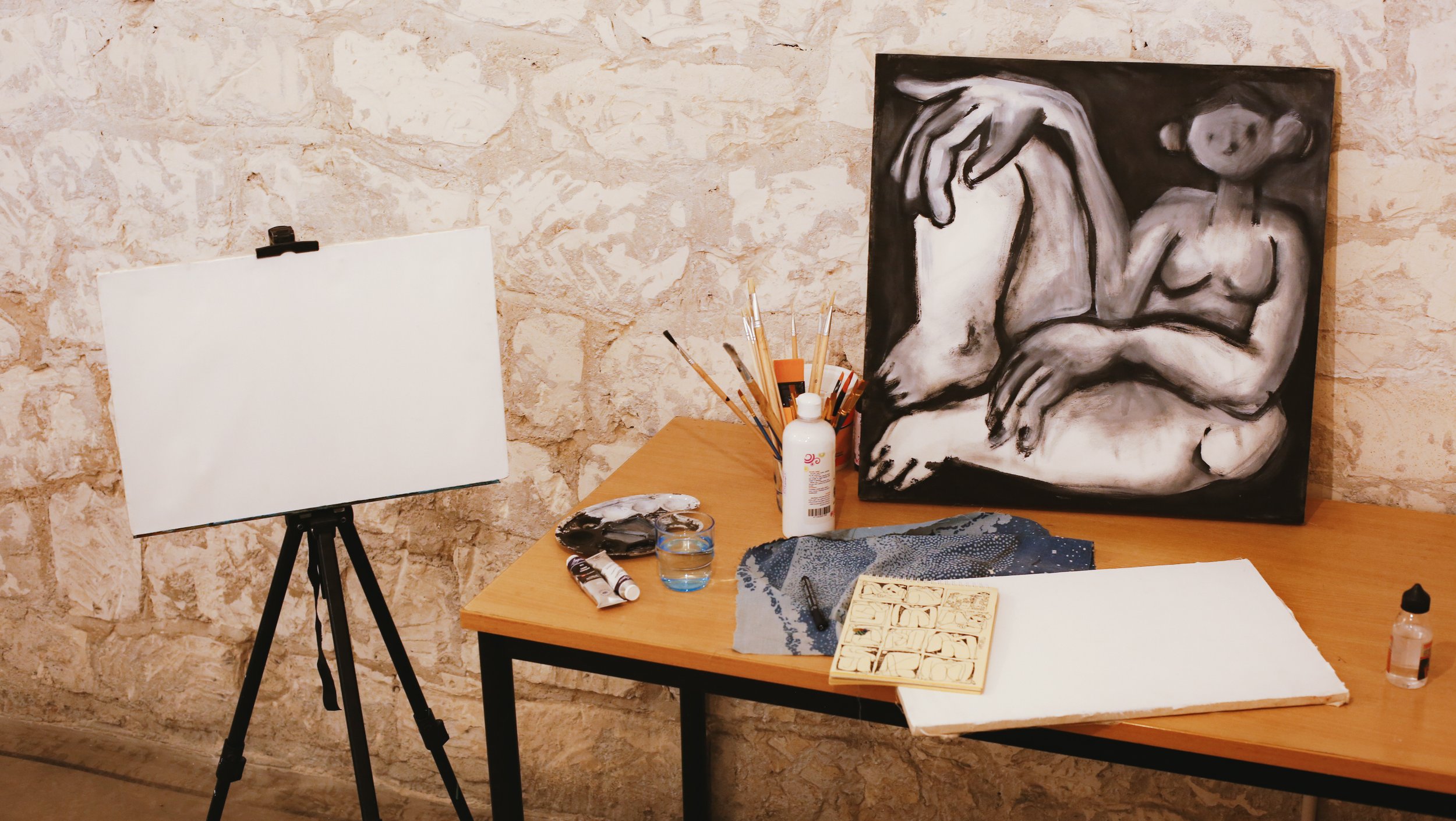
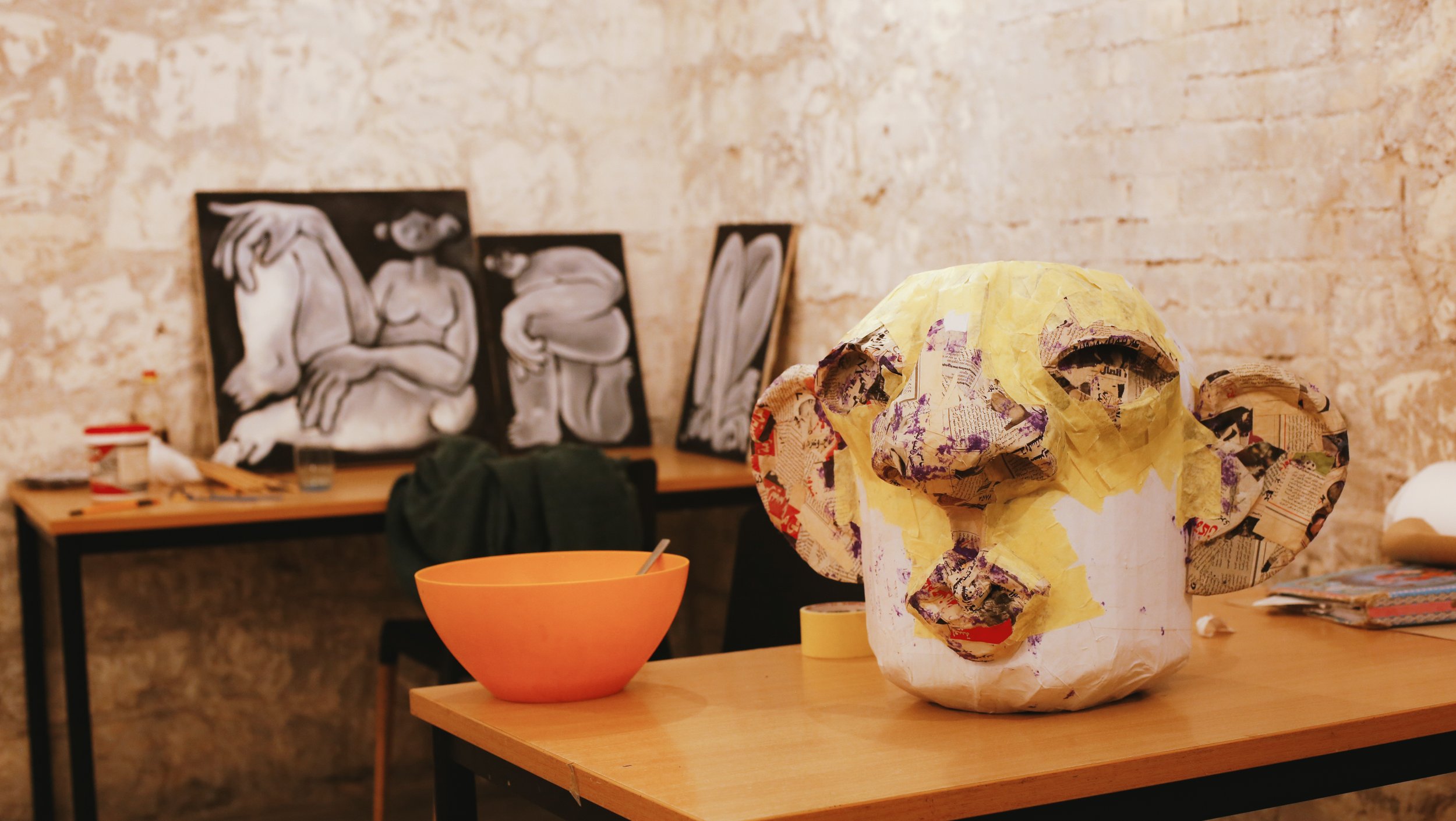
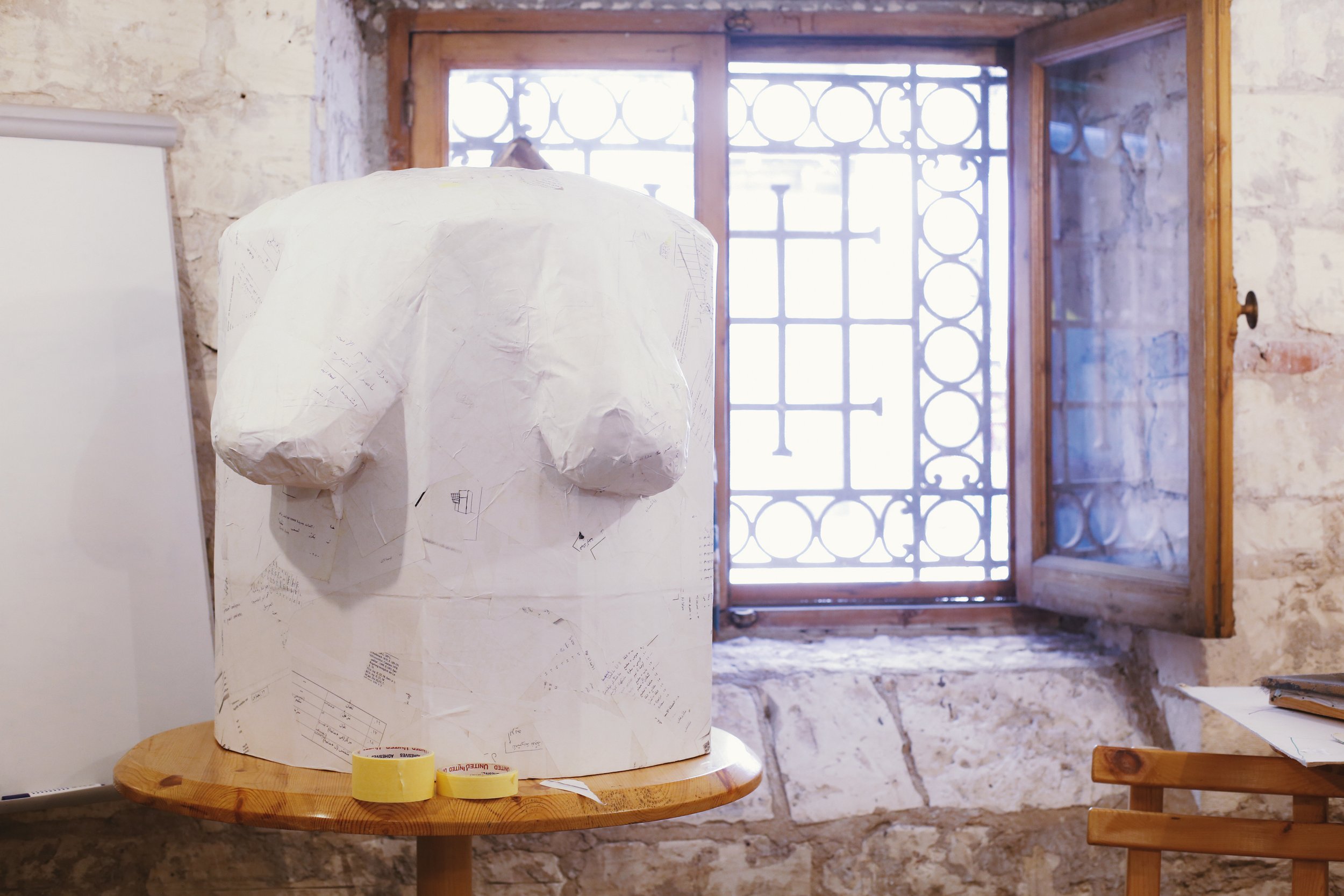
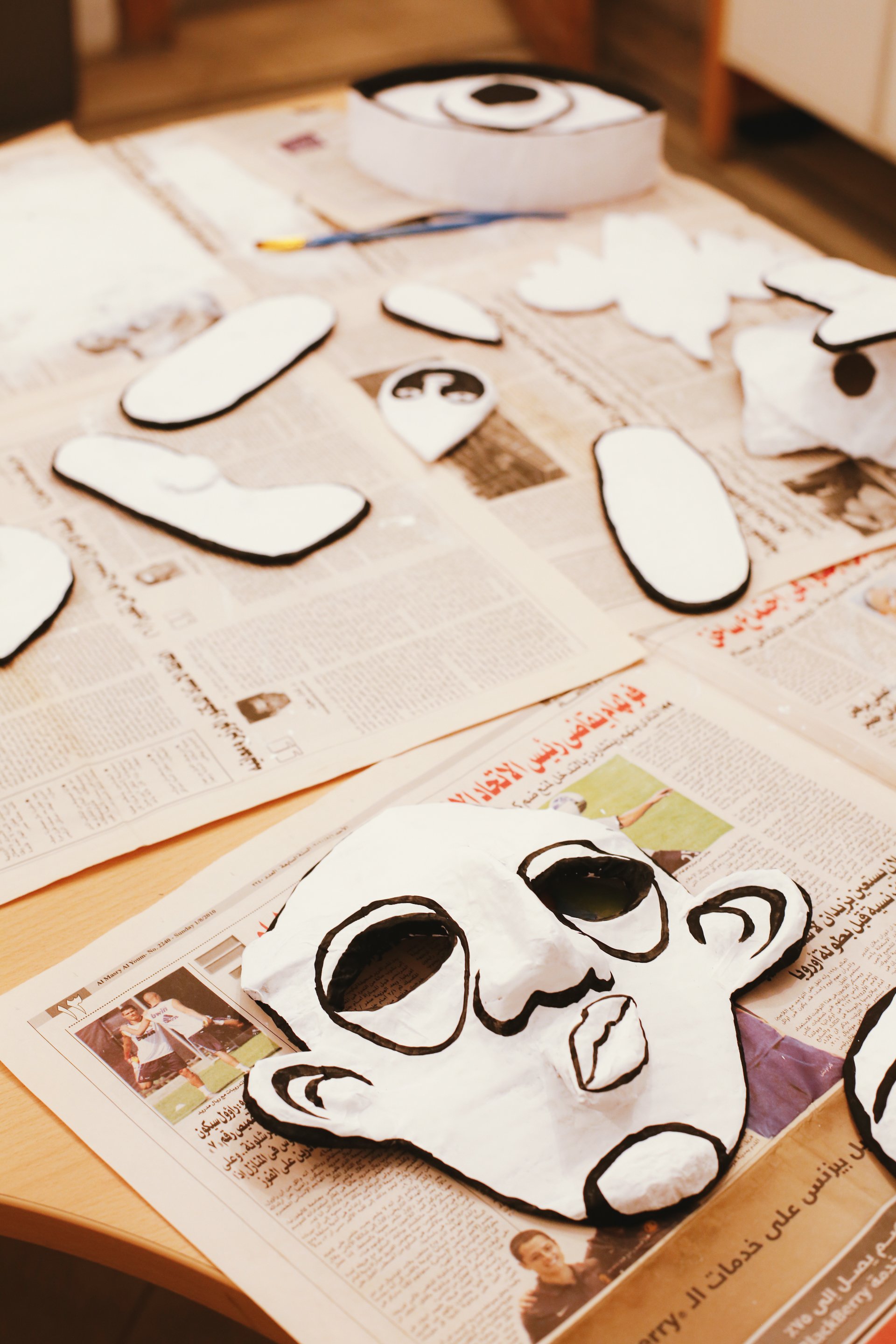




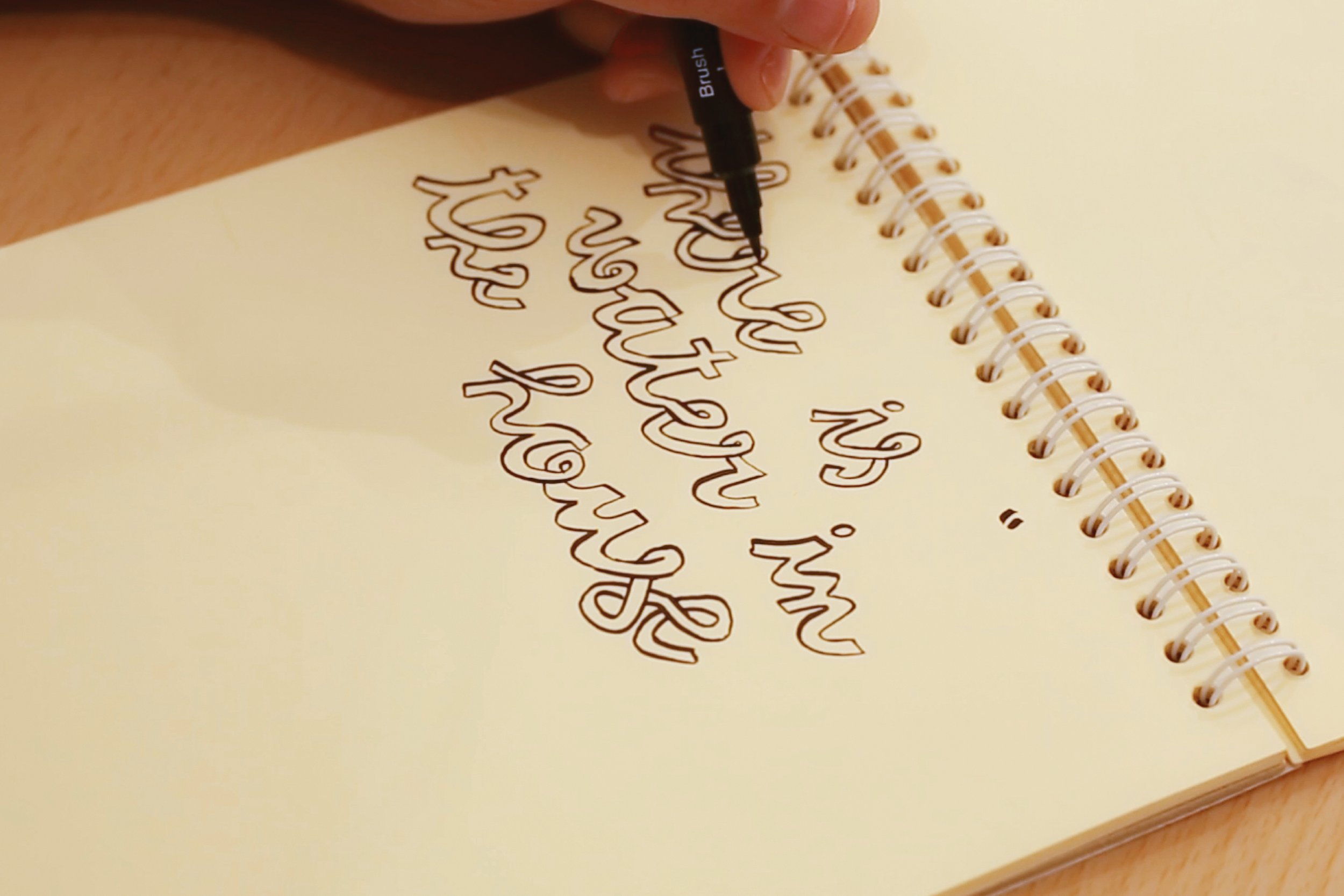


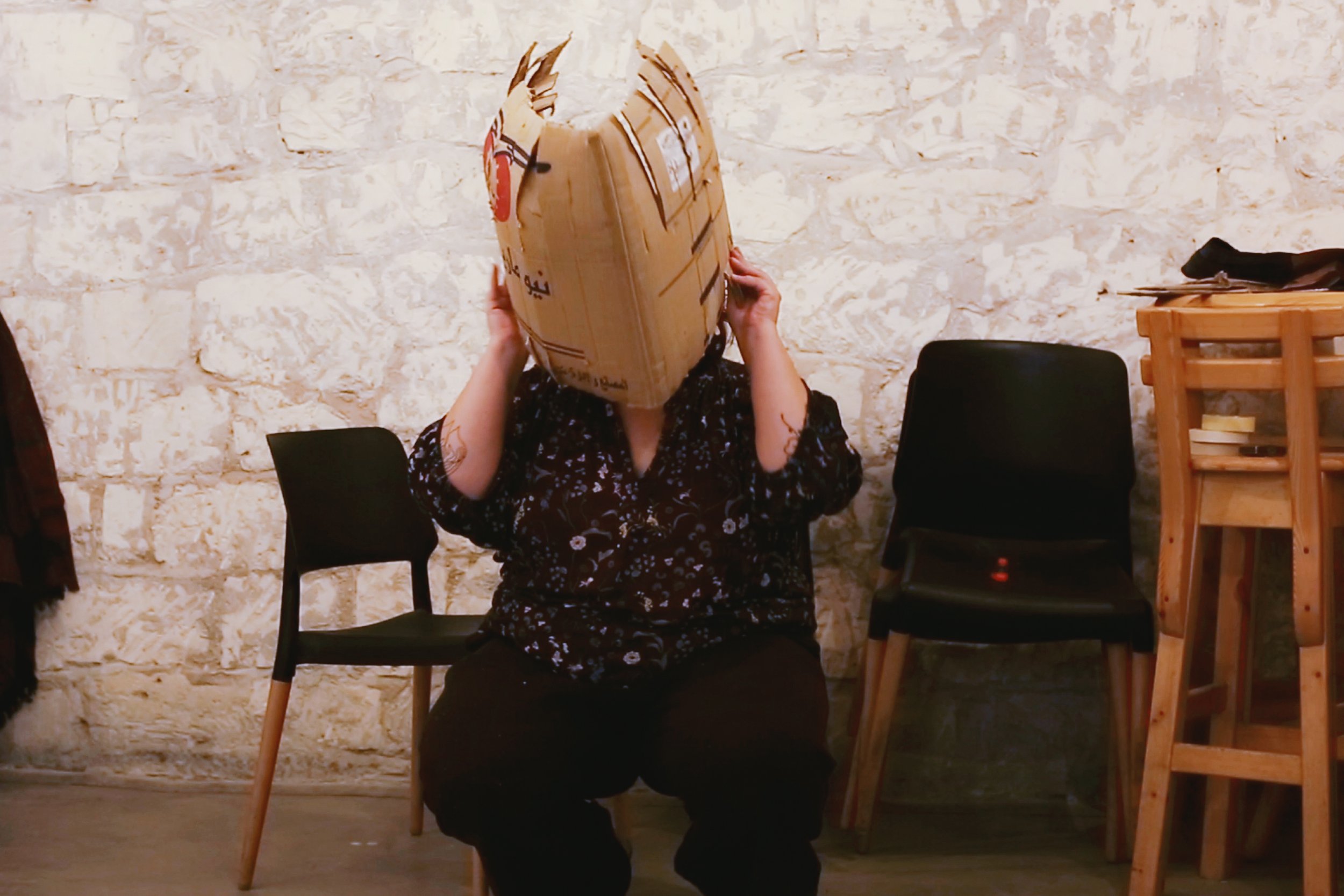

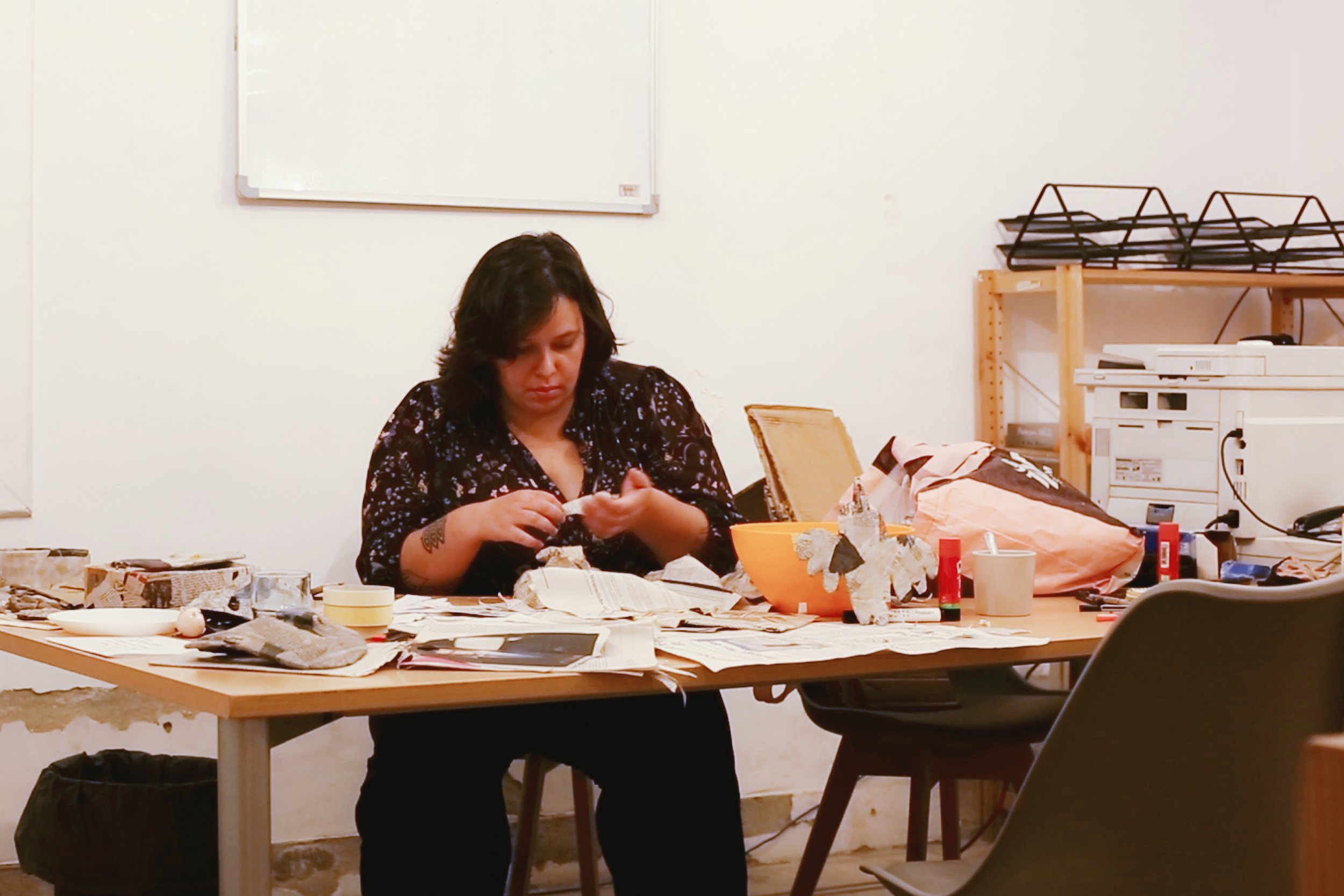

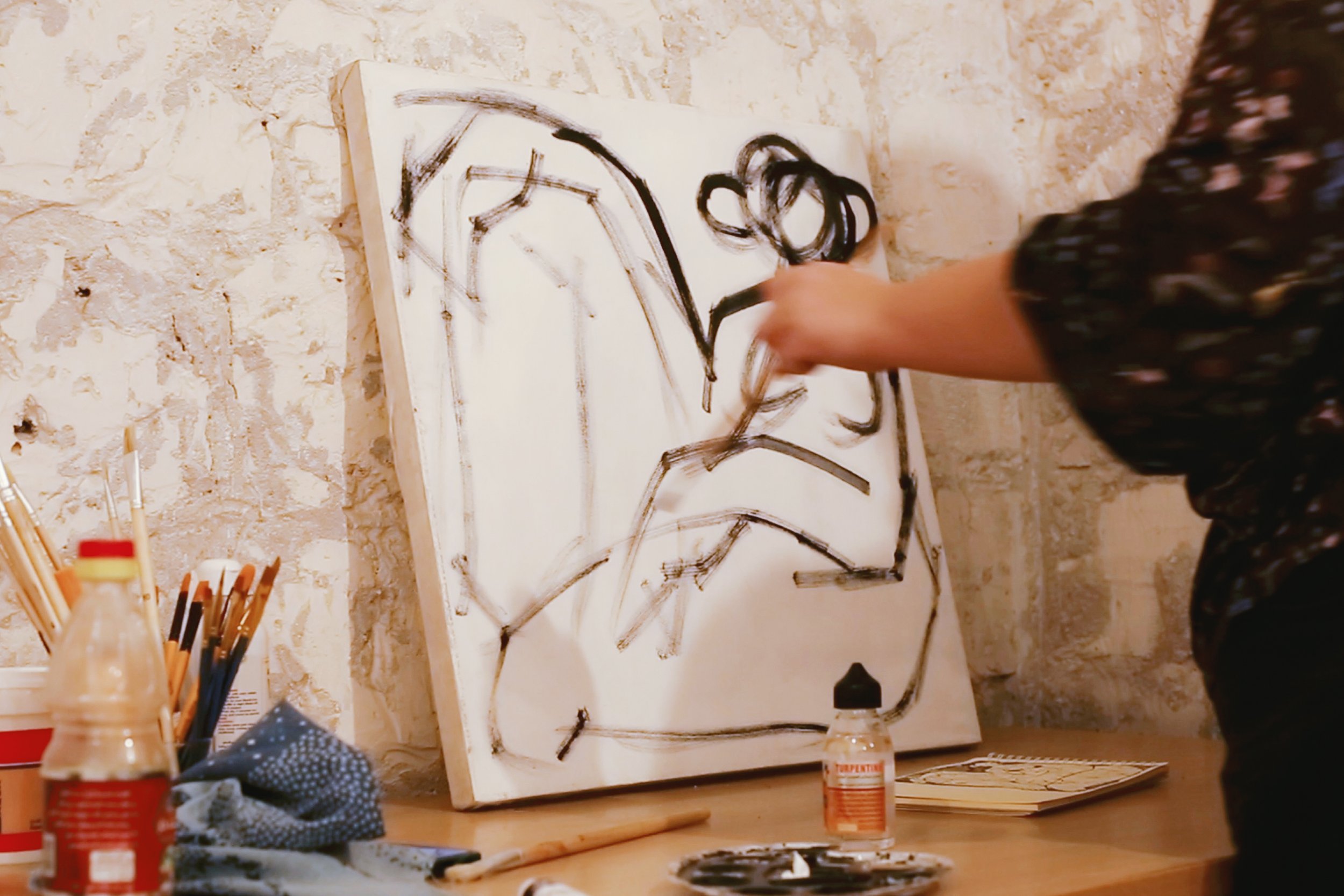
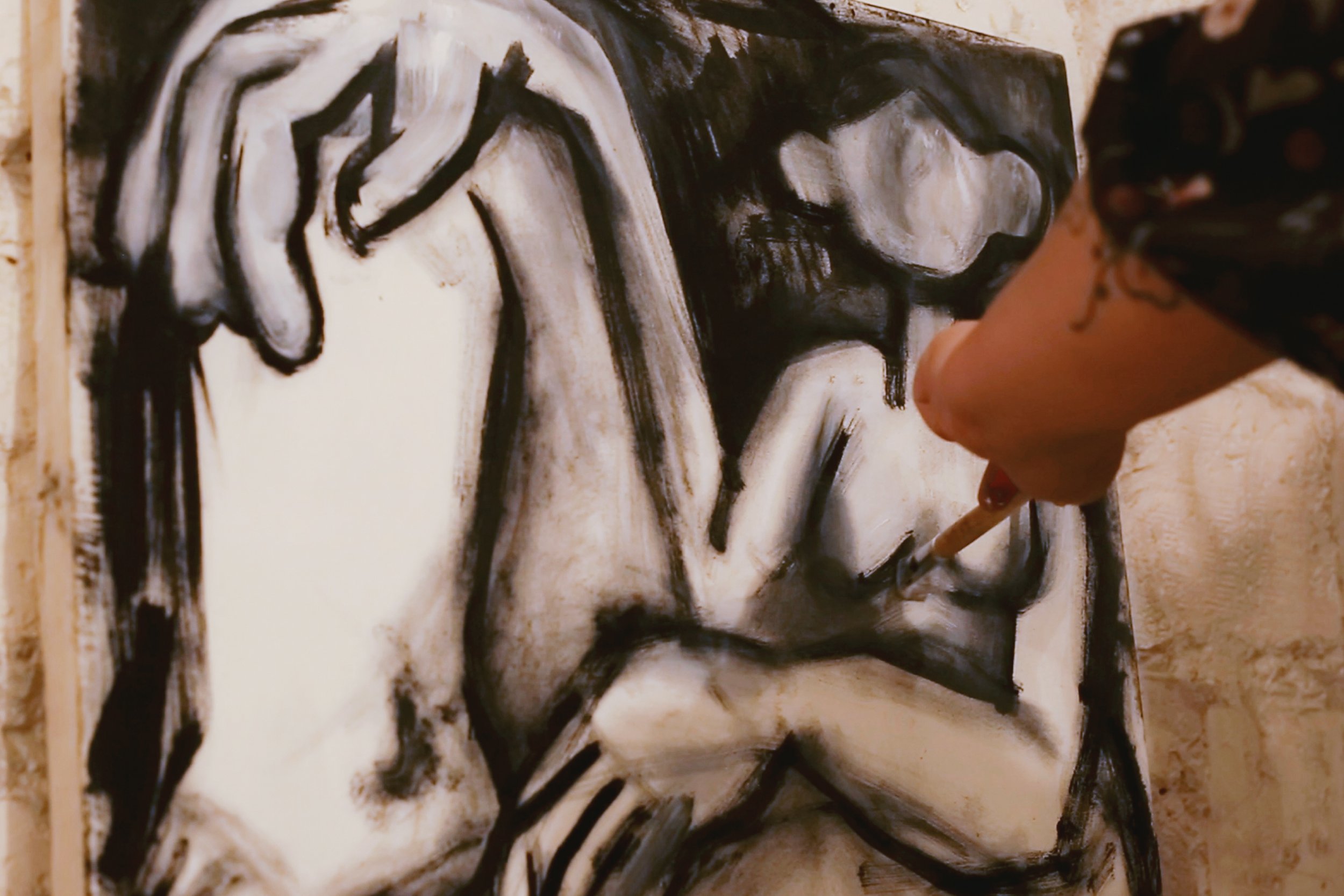

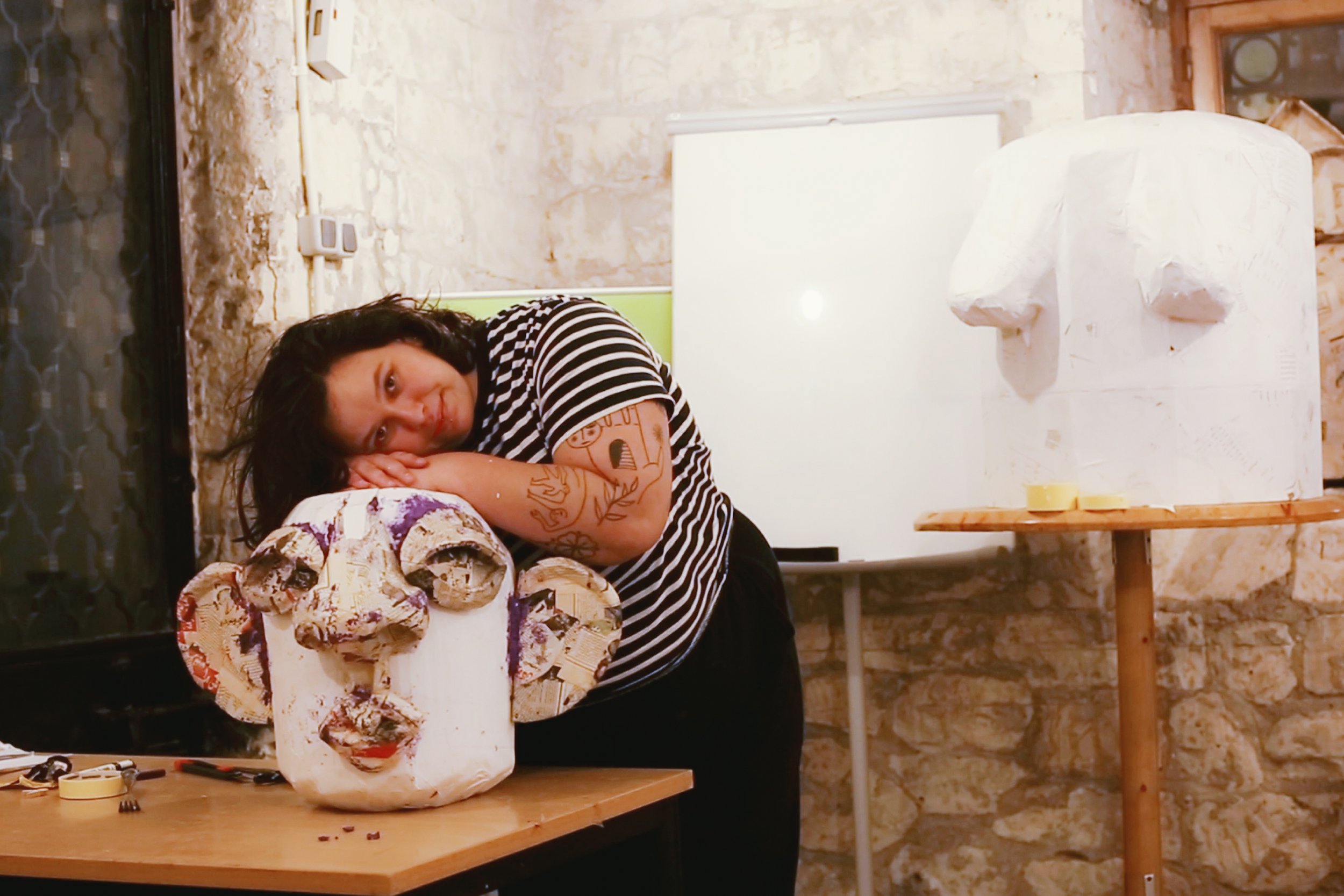
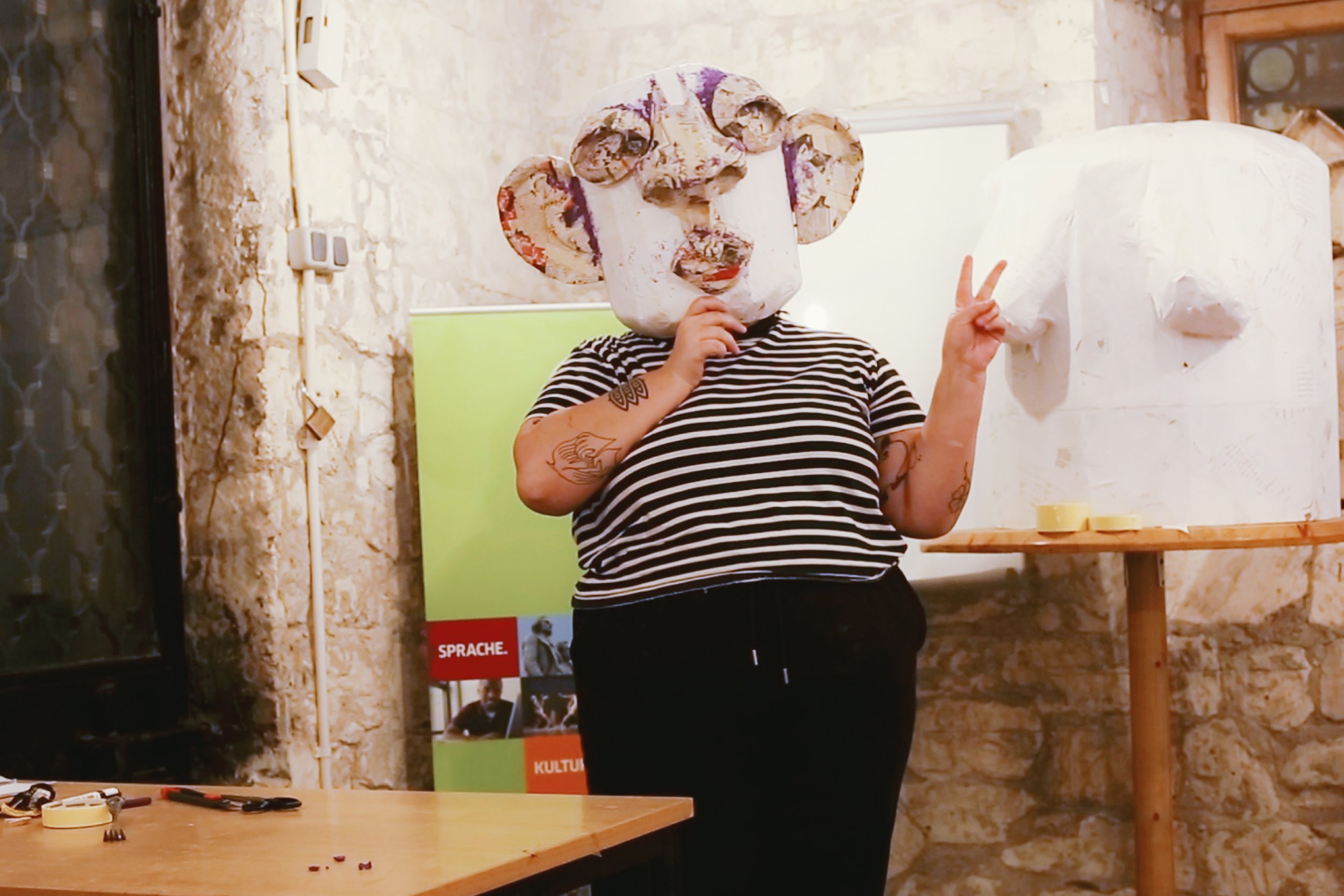
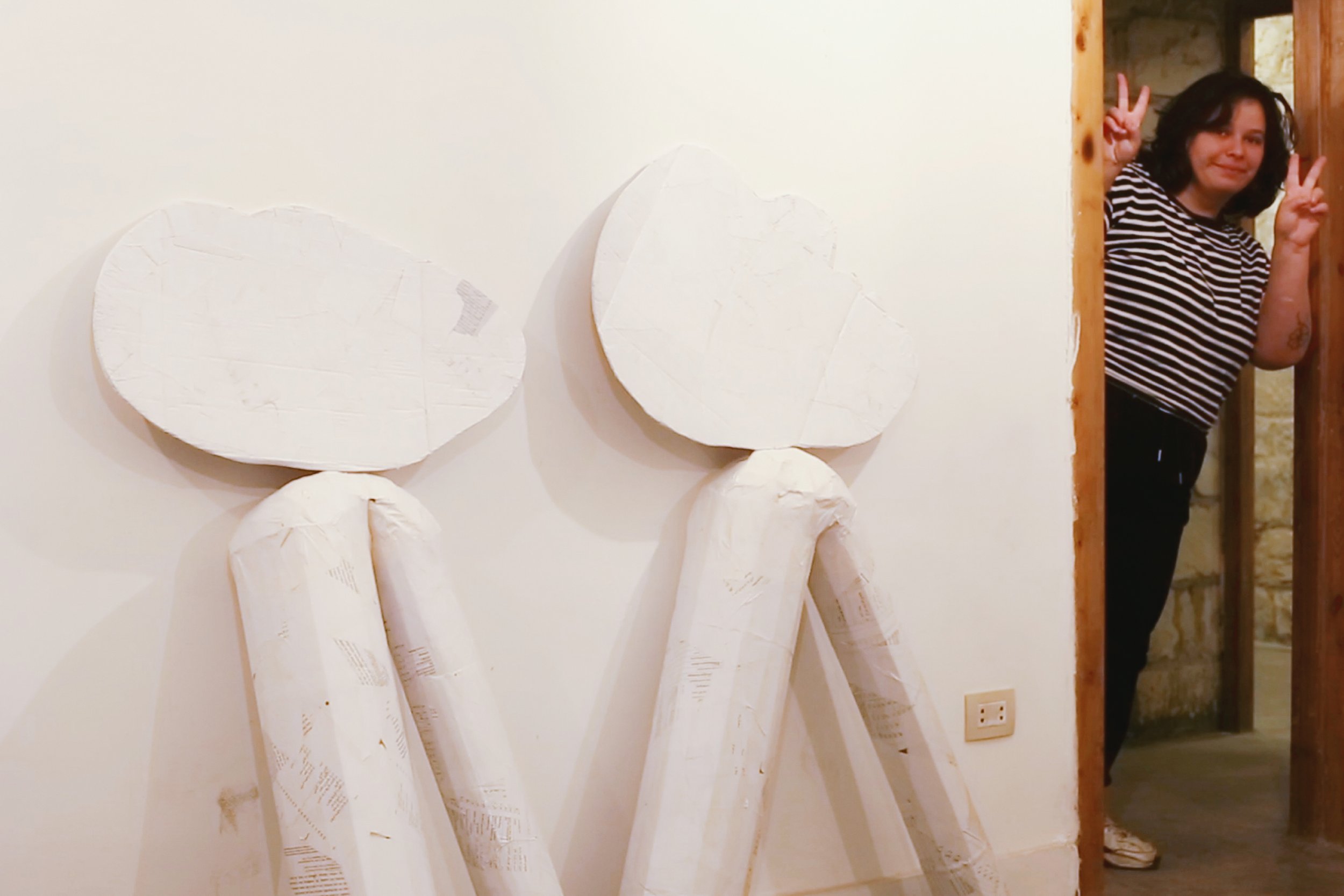

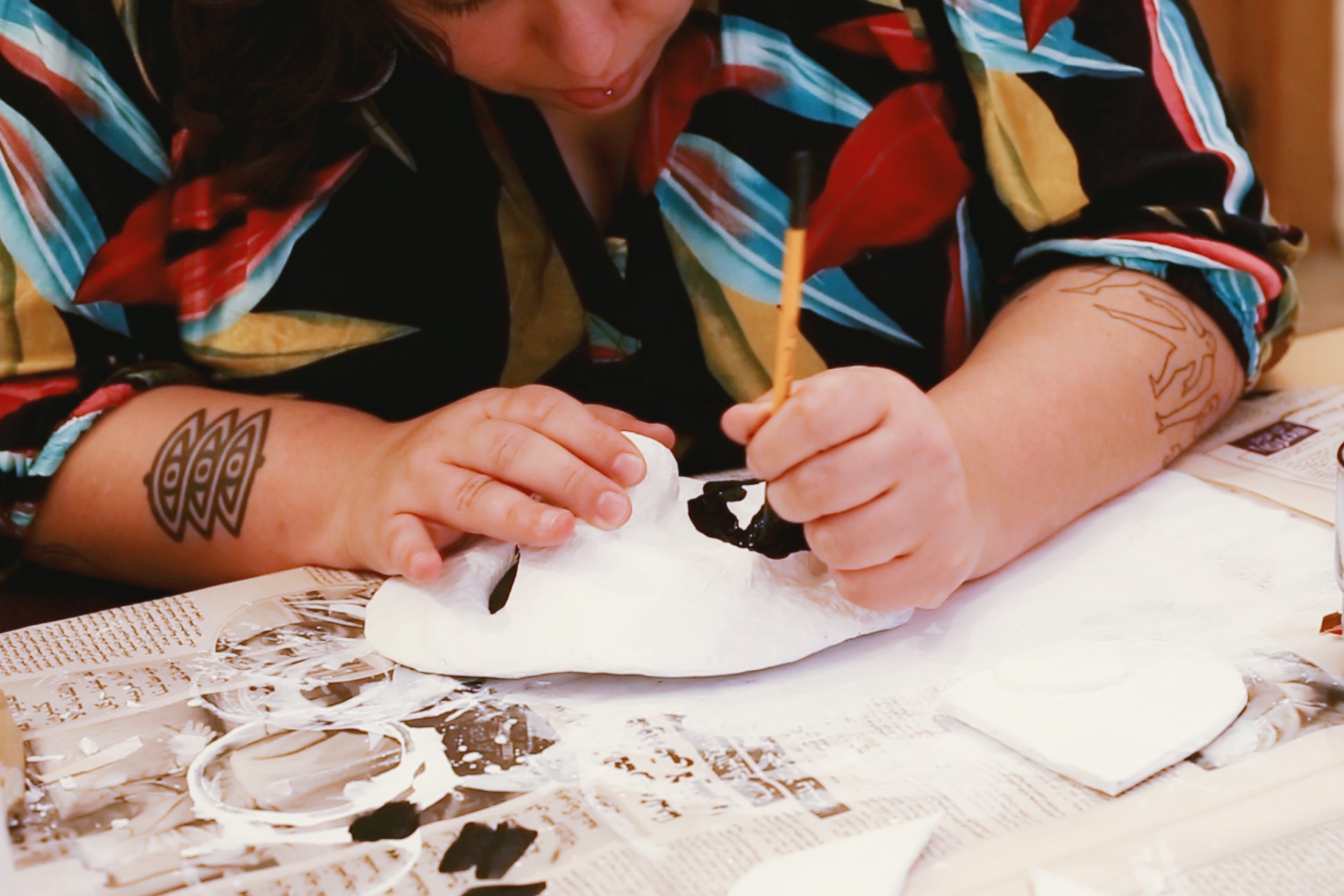

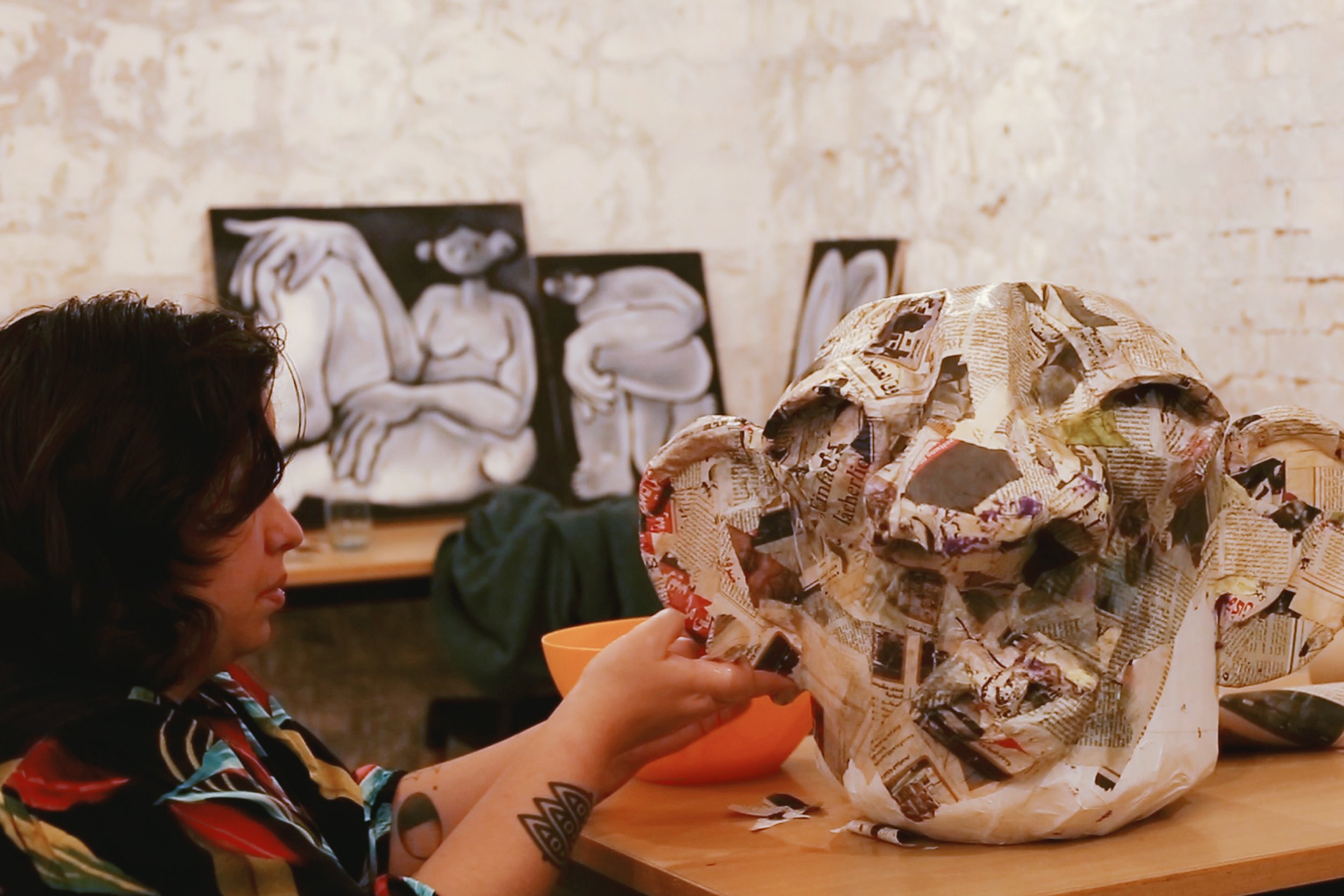
Recipe to digest your feelings a little better
- one and a half kilo of flour
- a bunch of moving boxes
- the language classes of an old roommate
- metal wires, PVA glue, wall paint, and wooden floor varnish (from Mansheya, very important)
- very important shredded documents from the workplace that fired you last year
- political podcasts and bossa nova
- a couple of pizza deliveries (for the mood)
- a lot of tea with a lot of sugar (for survival)












